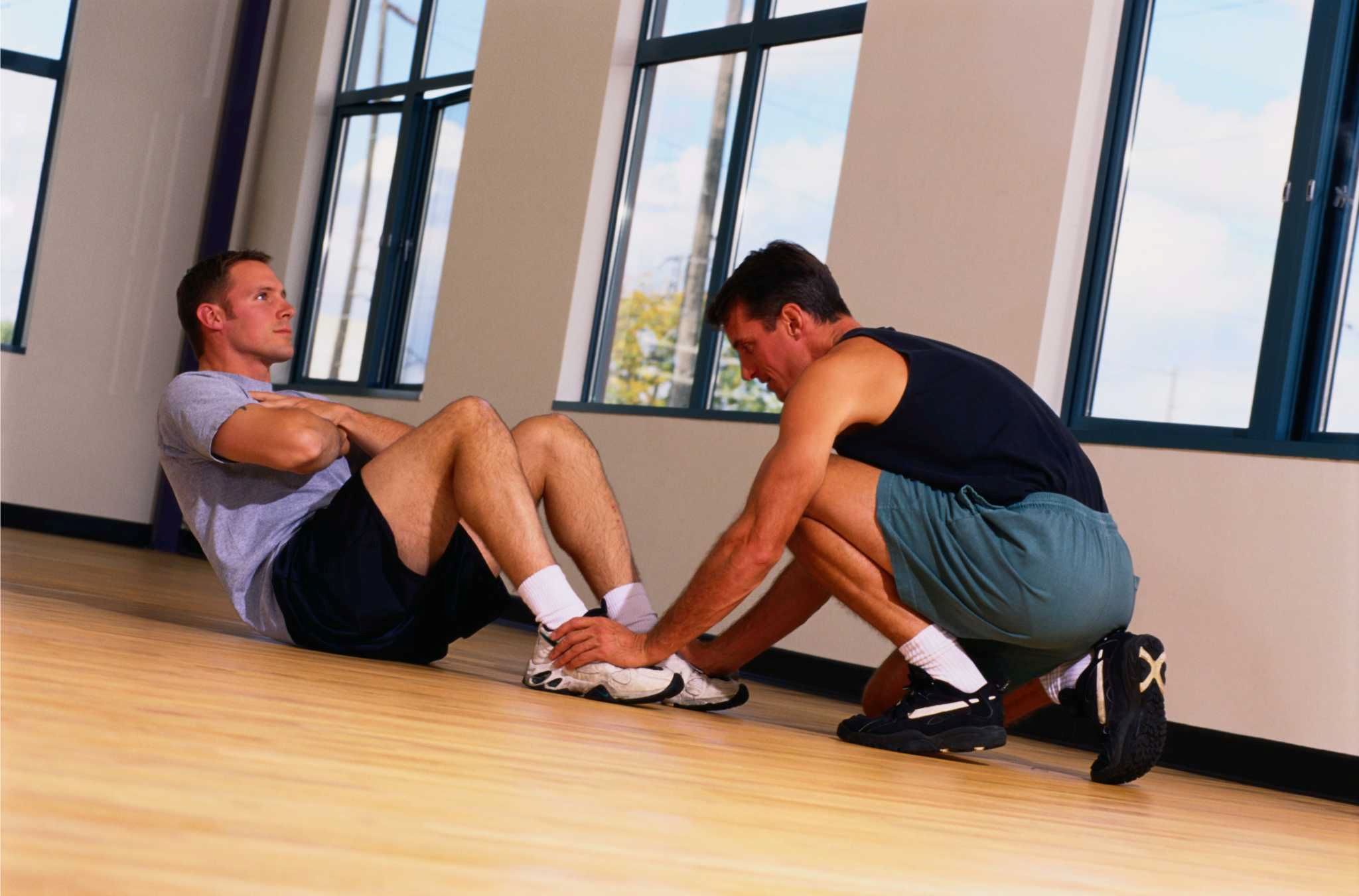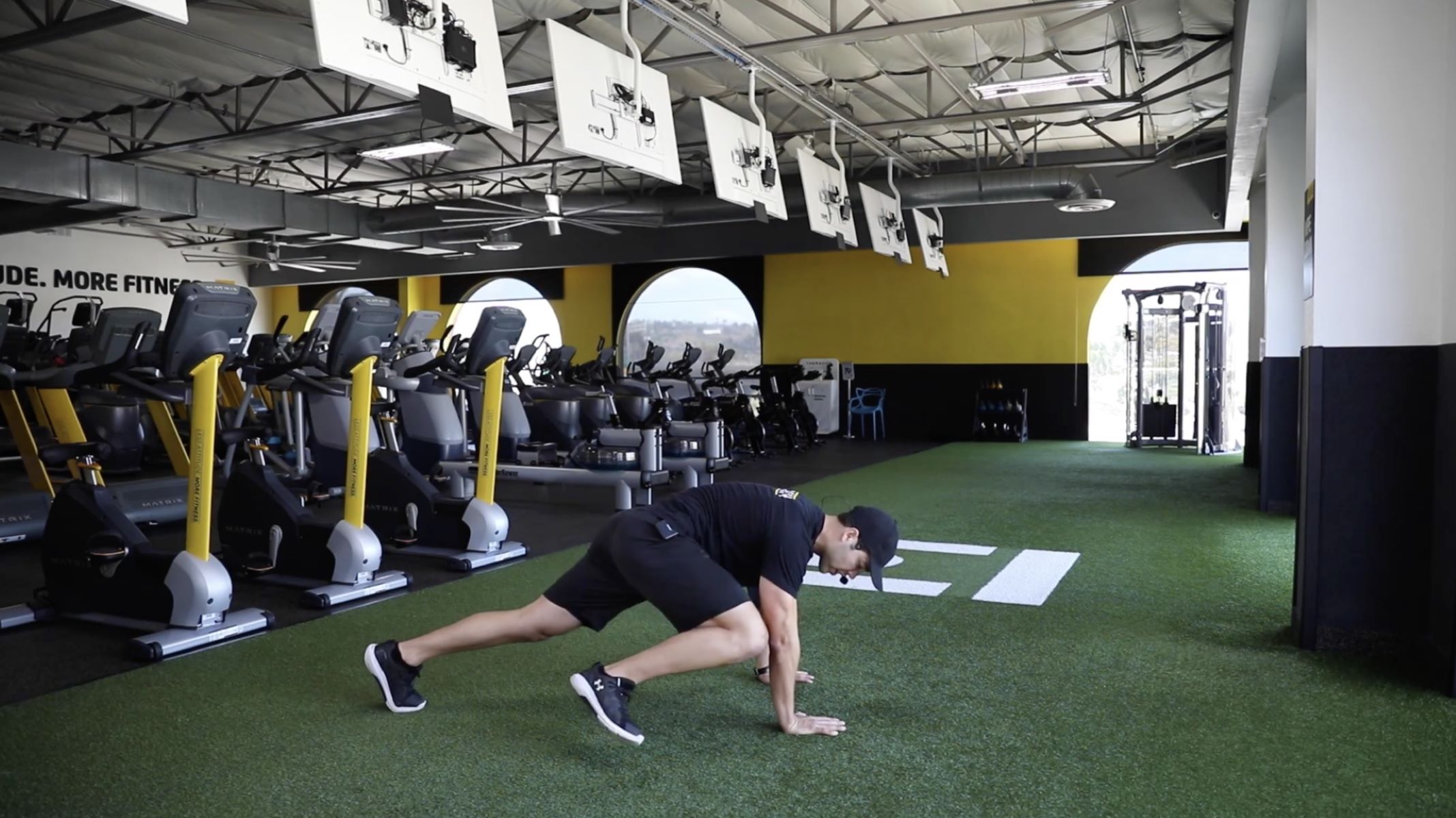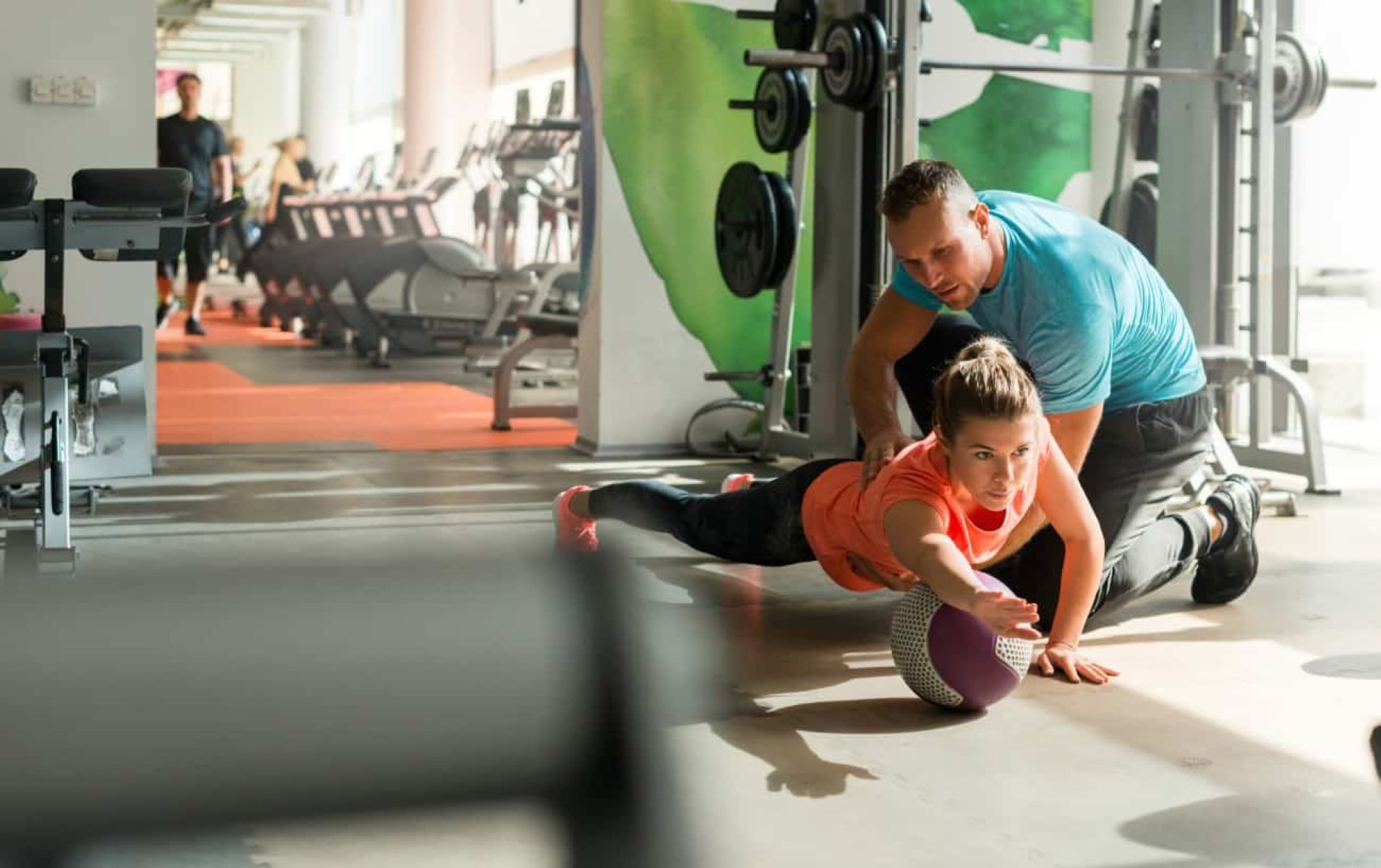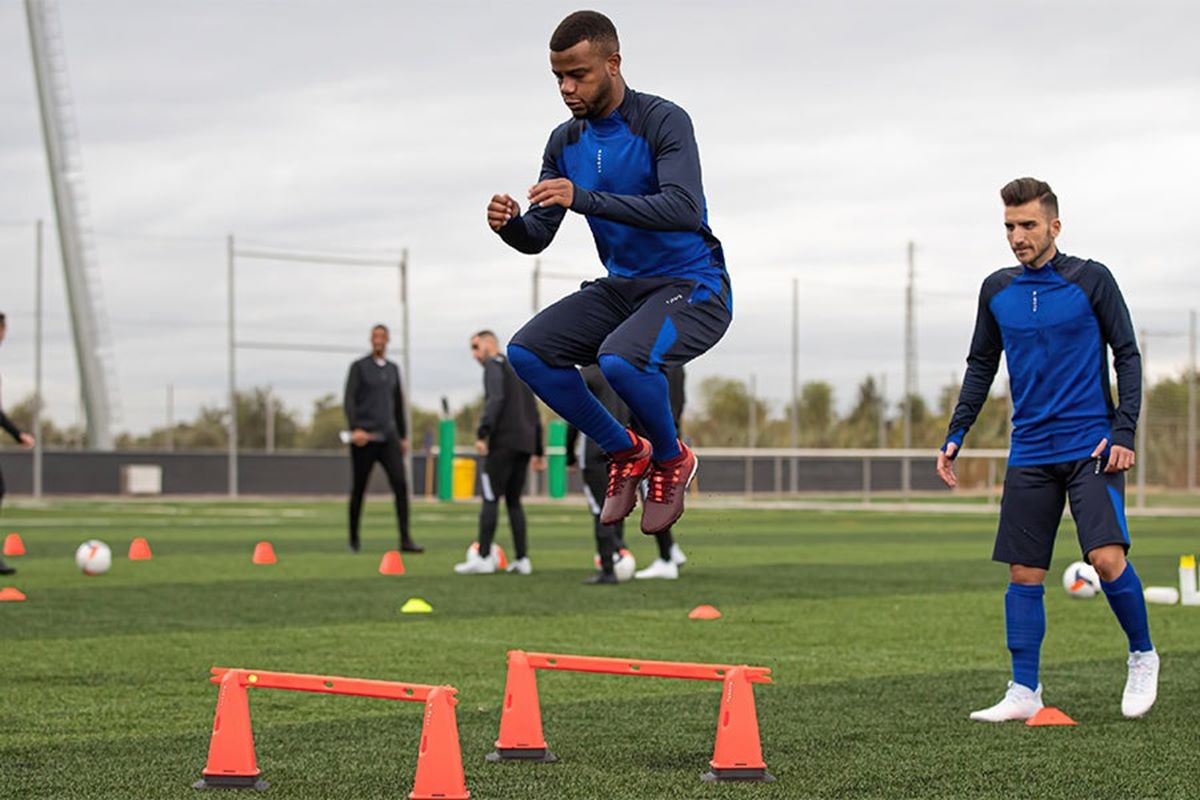Home>Misc>Featured>Which Of The Following Is True About Assessing Muscular Strength And Endurance


Featured
Which Of The Following Is True About Assessing Muscular Strength And Endurance
Modified: March 1, 2024
Learn about the true methods of assessing muscular strength and endurance in this featured article. Discover the key factors to consider for accurate results.
Introduction
Muscular strength and endurance are key components of physical fitness and play a crucial role in overall health and well-being. Assessing and improving these aspects of fitness are important for individuals of all ages and fitness levels.
Muscular strength refers to the maximum amount of force a muscle or muscle group can generate during a single contraction, while muscular endurance is the ability of a muscle or muscle group to perform repetitive contractions against a resistance over an extended period of time. Both factors are essential for performing everyday activities, preventing injuries, and excelling in athletic endeavors.
Assessing muscular strength and endurance provides valuable information about an individual’s current fitness level, helps identify strengths and weaknesses, and serves as a baseline for setting goals and tracking progress. By implementing targeted exercise programs, individuals can effectively improve their muscular strength and endurance, leading to enhanced performance and better overall health.
In this article, we will explore the importance of assessing muscular strength and endurance, discuss the factors that influence these attributes, examine various methods for assessing them, compare different assessment methods, and delve into the role of muscular strength and endurance in overall fitness. Additionally, we will highlight the benefits of improving muscular strength and endurance and provide recommendations for assessing and enhancing these fitness components.
Whether you are an athlete striving for peak performance, a fitness enthusiast aiming to improve your physical abilities, or simply someone looking to enhance your everyday activities, understanding and assessing your muscular strength and endurance can be a game-changer in your fitness journey.
Importance of Assessing Muscular Strength and Endurance
Assessing muscular strength and endurance is essential for several reasons. Firstly, it provides valuable information about an individual’s current fitness level. By evaluating these attributes, individuals can gain insights into their strength and stamina levels, identifying areas that need improvement and areas where they excel.
Furthermore, assessing muscular strength and endurance serves as a baseline for setting appropriate goals and tracking progress. It allows individuals to establish realistic and measurable targets, enabling them to monitor their advancements and make necessary adjustments to their training routines.
Another important aspect of assessing muscular strength and endurance is the identification of strengths and weaknesses. It allows individuals to pinpoint specific muscle groups or areas of their body that may require focused attention. By addressing these weaknesses, individuals can improve overall body balance and reduce the risk of potential injuries.
Moreover, the assessment of muscular strength and endurance provides an opportunity for individuals to identify any muscular imbalances that may exist. Muscular imbalances occur when certain muscle groups are significantly weaker or stronger than others, leading to poor posture and increased risk of injury. By identifying and correcting these imbalances, individuals can optimize their overall muscular function and reduce strain on the body.
Additionally, assessing muscular strength and endurance is not only relevant for athletes and fitness enthusiasts but also for individuals looking to enhance their daily activities. Strong muscles and endurance play a vital role in performing everyday tasks such as lifting heavy objects, climbing stairs, and maintaining balance. By improving these attributes, individuals can enhance overall functional fitness, making daily activities easier and reducing the risk of potential injuries.
Overall, assessing muscular strength and endurance is crucial for understanding one’s fitness level, setting goals, identifying strengths and weaknesses, and enhancing overall physical performance. It provides individuals with a roadmap to improve their fitness journey and optimize their overall health and well-being.
Factors Influencing Muscular Strength and Endurance
Several factors influence an individual’s muscular strength and endurance. Understanding these factors is crucial for effectively assessing and improving these aspects of fitness. Here are some key factors that have an impact on muscular strength and endurance:
- Genetics: Genetics play a significant role in an individual’s muscular strength and endurance. Some people naturally have a genetic advantage in terms of muscle fiber composition, muscle size, and response to training.
- Age: Muscular strength and endurance tend to decline with age. As we get older, there is a natural loss of muscle mass and a decrease in the ability of muscles to generate force. Regular strength training and endurance exercises can help slow down this age-related decline.
- Gender: In general, males tend to have greater muscular strength compared to females. This is primarily due to hormonal differences, such as higher testosterone levels in males, which promote muscle growth. However, it’s important to note that there is significant individual variation within genders.
- Training and Exercise: Regular resistance training and endurance exercises are crucial for improving muscular strength and endurance. The type, intensity, duration, and frequency of training all contribute to the development of muscle strength and endurance. Adequate rest and recovery are also essential for optimal muscle adaptation.
- Diet and Nutrition: Proper nutrition plays a vital role in supporting muscular strength and endurance. Consuming an adequate amount of protein, carbohydrates, and healthy fats provides the necessary fuel and building blocks for muscle growth and repair.
- Body Composition: Body composition, particularly the ratio of muscle mass to fat mass, can influence muscular strength and endurance. Higher muscle mass generally correlates with greater strength and endurance. Maintaining a healthy body weight and body composition through a combination of exercise and a balanced diet is important for optimizing muscular fitness.
- Injury and Rehabilitation: Past injuries, surgeries, or medical conditions can impact muscular strength and endurance. Rehabilitation exercises and proper guidance from healthcare professionals are crucial for regaining strength and endurance following an injury or surgery.
- Mental Factors: Psychological factors such as motivation, focus, and mental resilience can also influence muscular strength and endurance. Having a positive mindset, setting realistic goals, and staying consistent with training can contribute to improved performance.
It’s important to note that these factors are inter-related and can affect one another. By understanding these influences, individuals can tailor their training programs and lifestyle choices to optimize muscular strength and endurance.
Methods for Assessing Muscular Strength
Assessing muscular strength is crucial for evaluating the maximum force a muscle or muscle group can generate during a single contraction. Here are some common methods used to assess muscular strength:
- One-Rep Maximum (1RM) Test: The 1RM test is widely considered the gold standard for assessing maximal strength. It involves determining the maximum weight an individual can lift for one repetition with proper form. This test is commonly used for exercises like bench press, squat, and deadlift.
- Handgrip Dynamometer: The handgrip dynamometer is a portable device used to measure hand and forearm strength. An individual simply squeezes the dynamometer with maximum force, and the device records the strength in pounds or kilograms. This test is often used to assess overall upper body strength.
- Isokinetic Testing: Isokinetic testing involves the use of specialized machines that provide resistance at a constant velocity throughout the range of motion. This test measures the maximum force an individual can generate at different joint angles and movement speeds.
- Push-Up or Pull-Up Testing: These bodyweight exercises can be used to evaluate upper body strength. The number of push-ups or pull-ups a person can perform in a set period of time is an indicator of their muscular endurance and strength.
- Squat or Leg Press Testing: These exercises are used to assess lower body strength. The amount of weight an individual can squat or leg press for a given number of repetitions is an indicator of their lower body muscular strength.
Each of these methods has its advantages and limitations. The choice of assessment method depends on factors such as the specific muscle groups being tested, equipment availability, and the goals of the assessment.
Regardless of the method used, it is important to adhere to proper testing protocols, including warm-up, standardized positioning, and accurate recording of results. A qualified fitness professional or exercise specialist should be involved to ensure safety and accuracy during the assessment process.
Regularly assessing muscular strength allows individuals to track progress, identify areas that need improvement, and adjust their training programs accordingly. It provides valuable feedback and helps individuals set realistic and achievable goals to enhance their overall strength and performance.
Methods for Assessing Muscular Endurance
Assessing muscular endurance is important for evaluating the ability of a muscle or muscle group to perform repetitive contractions against a resistance over an extended period of time. Here are some common methods used to assess muscular endurance:
- Push-Up or Sit-Up Test: These bodyweight exercises are commonly used to assess upper body and core muscular endurance. The number of push-ups or sit-ups a person can perform in a set period of time, such as one minute, is an indicator of their muscular endurance.
- Plank Test: The plank is a static exercise that targets the core muscles. The amount of time a person can hold the plank position is an indicator of their core muscular endurance.
- Burpee Test: The burpee is a full-body exercise that combines strength and cardiovascular endurance. This exercise involves a series of movements like squatting, jumping, and push-ups. The number of burpees a person can perform in a set period of time is an indicator of their overall muscular and cardiovascular endurance.
- Step Test: The step test is a cardiovascular endurance assessment that can also provide insights into lower body muscular endurance. It involves stepping up and down onto a sturdy platform at a given pace for a set duration. The heart rate recovery after the test can indicate cardiovascular fitness, while the ability to continue stepping indicates lower body endurance.
- Timed Distance Run or Walk: The timed distance run or walk assesses cardiovascular endurance and lower body muscular endurance. Individuals are timed as they complete a specific distance, such as one mile, at a pace they can sustain. The faster the time, the greater the endurance.
When conducting these tests, it is important to standardize the testing conditions and adhere to proper form and technique. This ensures accurate and consistent results. Test results can be compared to standards or norms for a given population to gauge an individual’s endurance level.
It is important to note that the methods discussed here primarily focus on assessing muscular endurance in specific muscle groups or in conjunction with cardiovascular endurance. To obtain a comprehensive assessment of overall muscular endurance, it is beneficial to incorporate a variety of exercises that engage different muscle groups.
Regularly assessing muscular endurance provides individuals with valuable information about their stamina and helps them monitor their progress over time. It also assists in identifying weaknesses and areas for improvement, allowing for targeted training programs to enhance overall muscular endurance.
Comparison of Muscular Strength and Endurance Assessment Methods
Assessing muscular strength and endurance involves the use of various methods, each with its own advantages and limitations. Here, we compare the commonly used assessment methods for muscular strength and endurance:
- Muscular Strength Methods:
- One-Rep Maximum (1RM) Test: The 1RM test is considered the gold standard for assessing maximal strength. It provides an accurate measure of an individual’s maximum weight lifted for one repetition. However, it requires experienced supervision to ensure proper technique and safety.
- Handgrip Dynamometer: This method is simple, portable, and useful for assessing upper body strength. However, it only measures hand and forearm strength, neglecting other muscle groups.
- Isokinetic Testing: Isokinetic testing provides valuable information on strength at different angles and movement speeds. However, this method requires specialized equipment and may not be easily accessible.
- Push-Up or Pull-Up Testing: These bodyweight exercises assess upper body strength and can be performed anywhere. However, they primarily measure muscular endurance rather than maximal strength.
- Squat or Leg Press Testing: These exercises evaluate lower body strength and are easily performed with standard gym equipment. However, they require proper form and supervision to prevent injury.
- Muscular Endurance Methods:
- Push-Up or Sit-Up Test: These bodyweight exercises are simple and effective for assessing upper body and core muscular endurance. However, they focus on specific muscle groups and may not reflect overall endurance.
- Plank Test: The plank test targets core endurance and is easily administered. However, it does not provide a comprehensive assessment of overall endurance.
- Burpee Test: The burpee test challenges both strength and cardiovascular endurance. However, it requires familiarity with the exercise and may not be suitable for individuals with certain physical limitations.
- Step Test: This test combines cardiovascular and lower body endurance assessment. However, it may not specifically target upper body or core muscular endurance.
- Timed Distance Run or Walk: This test evaluates cardiovascular and lower body endurance and is easily performed. However, it does not specifically assess upper body or core endurance.
When selecting an assessment method, it is important to consider the specific goals, equipment availability, and individual capabilities. Combining multiple methods can provide a more comprehensive assessment of both muscular strength and endurance.
It’s essential to ensure proper warm-up, standardized protocols, and safety precautions during the assessment process. Consulting with a qualified fitness professional or exercise specialist can help individuals choose and administer appropriate assessment methods according to their specific goals and needs.
The Role of Muscular Strength and Endurance in Overall Fitness
Muscular strength and endurance are critical components of overall fitness and play a vital role in our daily lives. Here, we explore the importance of muscular strength and endurance in relation to overall fitness:
Enhanced Physical Performance: Muscular strength and endurance are fundamental for performing everyday activities with ease and efficiency. Whether it’s lifting heavy objects, carrying groceries, climbing stairs, or participating in sports or recreational activities, having strong muscles and good endurance allows us to perform these tasks more effectively and with reduced risk of injury.
Improved Body Composition: Developing muscular strength and endurance contributes to a favorable body composition. Lean muscle mass increases the body’s metabolic rate, facilitating the burning of calories even at rest. Additionally, regular strength training promotes the growth of lean muscle while reducing the percentage of body fat, resulting in a more toned and fit appearance.
Enhanced Bone Health: Engaging in resistance training to improve muscular strength and endurance also has a positive impact on bone health. Weight-bearing exercises stimulate the bones, promoting bone density and reducing the risk of osteoporosis and fractures, especially as we age.
Injury Prevention: Strong muscles and good muscular endurance help stabilize and support the joints, reducing the risk of injury during physical activities and sports. Muscular imbalances often contribute to poor posture and movement patterns, increasing the likelihood of injuries. Developing balanced strength and muscular endurance throughout the body helps reduce this risk.
Improved Quality of Life: Having good muscular strength and endurance enhances overall functional fitness, allowing individuals to engage in daily activities more easily and with less fatigue. This improves independence and enhances the enjoyment of leisure activities, leading to an overall improved quality of life.
Mental and Emotional Well-being: The benefits of muscular strength and endurance extend beyond the physical realm. Regular exercise, including strength and endurance training, has been shown to reduce stress, anxiety, and symptoms of depression. Engaging in these types of exercises releases endorphins, the body’s natural feel-good chemicals, improving mood and overall mental well-being.
When considering overall fitness, it is important to address both cardiovascular fitness and muscular strength and endurance. While cardiovascular fitness focuses on the health of the heart and lungs, muscular strength and endurance contribute to functional fitness, promoting strength, stability, and improved physical performance in daily activities. An effective fitness program should incorporate exercises that challenge and improve both cardiovascular fitness and muscular strength and endurance.
Benefits of Improving Muscular Strength and Endurance
Improving muscular strength and endurance offers a wide range of benefits that positively impact overall physical and mental well-being. Here are some key benefits of enhancing muscular strength and endurance:
- Increased Muscle Power: Developing muscular strength and endurance enhances muscle power, which is essential for activities that require explosive movements, such as sprinting, jumping, or throwing. Increased muscle power not only improves athletic performance but also enhances everyday activities, making them easier and more efficient.
- Enhanced Physical Performance: Improving muscular strength and endurance enhances overall physical performance in various domains, including sports, recreational activities, and even daily tasks. With increased strength and endurance, individuals can perform activities with reduced effort, increased efficiency, and reduced risk of injury.
- Improved Metabolic Health: Engaging in resistance training to improve muscular strength and endurance can significantly impact metabolic health. It aids in regulating blood sugar levels, improving insulin sensitivity, and promoting healthy cholesterol and triglyceride levels. These improvements contribute to a reduced risk of developing metabolic disorders such as type 2 diabetes and metabolic syndrome.
- Enhanced Body Composition: Building muscular strength and endurance helps increase lean muscle mass and decrease body fat percentage. With increased muscle mass, the body’s metabolic rate also increases, resulting in more calories burned at rest. This can aid in weight management and contribute to a leaner and more toned appearance.
- Improved Bone Health: Engaging in regular strength training to improve muscular strength and endurance also benefits bone health. It helps to increase bone density, reducing the risk of osteoporosis and fractures. This is particularly important as we age when bone density naturally decreases.
- Reduced Risk of Injury: Strong muscles and good muscular endurance provide stability and support to the joints, reducing the risk of injuries and falls. This is particularly important for individuals who participate in high-impact activities or have physically demanding jobs.
- Enhanced Functional Fitness: Improving muscular strength and endurance enhances functional fitness, which refers to the ability to perform daily tasks with ease and efficiency. It improves the ability to lift and carry objects, climb stairs, maintain balance, and engage in activities that require endurance, such as gardening or playing with children.
- Boosted Mental Well-being: Regular exercise, including strength and endurance training, has a positive impact on mental well-being. It reduces stress levels, improves mood, and promotes better sleep. Engaging in these types of exercises releases endorphins, which are known as natural mood boosters.
Improving muscular strength and endurance is not only beneficial for athletes and fitness enthusiasts but for individuals of all ages and fitness levels. Whether you are looking to enhance your athletic performance, improve your body composition, or simply lead a healthier and more active lifestyle, focusing on these aspects of fitness can bring about significant improvements in overall physical and mental well-being.
Recommendations for Assessing and Improving Muscular Strength and Endurance
Assessing and improving muscular strength and endurance is essential for optimizing overall fitness. Here are some recommendations to effectively assess and enhance these important components of physical fitness:
1. Assessments:
- Utilize appropriate assessment methods according to specific goals and capabilities.
- Ensure proper warm-up, standardized protocols, and safety precautions during assessments.
- Consider working with a qualified fitness professional or exercise specialist for accurate testing and expert guidance.
- Regularly reassess muscular strength and endurance to track progress and modify training programs accordingly.
2. Resistance Training:
- Incorporate a variety of resistance exercises to target different muscle groups and promote overall muscular development.
- Include both compound exercises (e.g., squats, deadlifts) and isolation exercises (e.g., bicep curls, triceps extensions) for balanced muscle development.
- Gradually increase the intensity, weight, or repetitions to continually challenge the muscles and promote strength and endurance improvements.
- Perform resistance training exercises 2-3 times per week, allowing for adequate rest and recovery between sessions.
3. Endurance Training:
- Engage in cardiovascular exercises such as running, cycling, swimming, or rowing to improve overall endurance.
- Incorporate interval training, where periods of high-intensity effort are alternated with periods of rest or lower intensity, to challenge and improve cardiovascular endurance.
- Include activities that specifically target muscular endurance, such as bodyweight exercises (push-ups, lunges) or circuit training.
- Vary the duration and intensity of endurance training to continuously challenge and improve muscular stamina.
4. Progressive Overload:
- Gradually increase the intensity, load, or duration of exercises over time to continue challenging the muscles and promoting strength and endurance gains.
- Utilize resistance bands, free weights, or weight machines to provide progressive resistance in strength training.
- Track progress and adjust training variables accordingly to ensure ongoing improvement.
5. Proper Nutrition:
- Consume a balanced diet with adequate protein to support muscle growth and repair.
- Include carbohydrates as a fuel source for energy during training sessions.
- Eat a variety of fruits, vegetables, whole grains, and healthy fats to support overall health and optimal exercise performance.
- Stay hydrated to maintain muscle function and overall well-being.
6. Rest and Recovery:
- Allow for sufficient rest between resistance and endurance training sessions to promote muscle repair and prevent overtraining.
- Incorporate rest days into your training program to allow the body to recover and adapt to the training stimulus.
- Get adequate sleep to support muscle recovery, hormone balance, and overall physical and mental well-being.
7. Consistency and Progression:
- Consistency is key for achieving and maintaining improvements in muscular strength and endurance.
- Follow a structured exercise program that includes both resistance training and endurance activities.
- Gradually increase the intensity, duration, or repetitions of exercises over time to promote continuous progress.
- Listen to your body and prioritize proper form and technique to prevent injuries.
By implementing these recommendations, individuals can effectively assess, enhance, and maintain muscular strength and endurance, leading to improved performance, functional fitness, and overall well-being.
Conclusion
Assessing and improving muscular strength and endurance are vital for achieving optimal physical fitness and overall health. Muscular strength and endurance play a significant role in enhancing performance, preventing injuries, and improving daily activities. By evaluating these aspects of fitness, individuals can gain valuable insights into their current fitness levels, set meaningful goals, and track progress over time.
Assessing muscular strength and endurance can be done through various methods, including one-rep maximum tests, handgrip dynamometers, and bodyweight exercises like push-ups and sit-ups. Each method has its own advantages and limitations, and individuals can choose the one that best suits their specific goals and capabilities.
Improving muscular strength and endurance requires a combination of resistance training, endurance exercises, proper nutrition, rest, and progressive overload. Resistance training helps build muscular strength, while endurance exercises improve stamina. Proper nutrition supports muscle growth and repair, and adequate rest allows for recovery and adaptation.
Enhancing muscular strength and endurance brings a multitude of benefits, including increased muscle power, improved physical performance, enhanced body composition, better bone health, reduced risk of injury, enhanced functional fitness, and boosted mental well-being.
To optimize their muscular strength and endurance, individuals should consistently assess their fitness levels, follow structured exercise programs, and progressively challenge their muscles. With proper guidance and a holistic approach to fitness, individuals can achieve significant improvements in their overall strength, endurance, and quality of life.
By prioritizing the development and maintenance of muscular strength and endurance, individuals can unlock their true physical potential, enhance their performance in various activities, and improve their overall well-being for a healthier, more active lifestyle.









